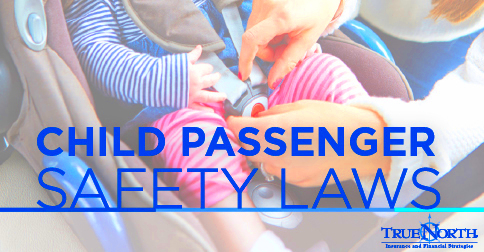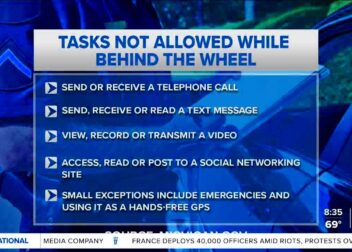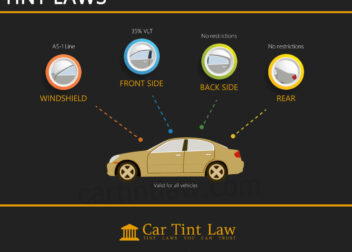Connecticut’s Child Passenger Safety Laws
Keeping your kid secure on the road is the most important thing as a parent. Connecticut’s child passenger safety laws ensure that our little ones are safe from harm by keeping them properly secured while riding in cars. I bear in mind when my own child was just a baby, and each time we go somewhere, I would adjust the car seat straps again an again. It appears to be a little thing to do but really makes all the difference. Let’s explore these safety regulations in more detail why they matter to every Connecticut family.
Understanding Age and Weight Requirements for Car Seats

Choosing a car seat is a challenge that all parents are familiar with. Comfort alone is not enough; these rules simply must be adhered to for our children’s safety. The rules concerning ages and weights of those required to use them are contained within Connecticut law which must therefore be diligently followed.
Infants and Toddlers: From the moment your baby leaves the hospital, they must be in a rear-facing car seat. This is non-negotiable until they are at least two years old or until they exceed the manufacturer’s height or weight limits. I still remember the relief I felt when I found a seat that fit just right for my tiny newborn, knowing he was as safe as could be.
Preschoolers: Once your child outgrows the rear-facing seat, it’s time for a forward-facing seat with a harness. This typically happens around the age of two, but each child is different. The harness, much like a superhero’s safety belt, should fit snugly across their shoulders and chest.
School-age Children: When your child reaches around 40 pounds or 4 years old, they can graduate to a booster seat. This stage always felt like a milestone, a sign that they’re growing up, but it’s still a step that requires caution and care.
When to Transition from Rear-Facing to Forward-Facing Seats
Knowing when to move from a rear-facing seat to a front-facing one may resemble going through a labyrinth. To us, that was a moment when we had to peruse instruction manuals and adjust every belt because it was such an important moment.
The Law vs. The Reality: Connecticut law mandates that children must remain in a rear-facing seat until they are at least two years old or exceed the seat’s weight or height limit. However, experts recommend keeping children rear-facing for as long as possible because it offers better protection for their developing neck and spine. I know I kept my son rear-facing for an extra few months, just to be sure.
Signs Your Child is Ready: You’ll know it’s time when your child’s head is within an inch of the top of the seat, or when they’ve reached the maximum weight limit (usually around 35-40 pounds). It’s like watching them outgrow their favorite pair of shoes – bittersweet, but necessary.
Making the Switch Smooth: Moving to a forward-facing seat doesn’t just mean turning the seat around. It’s crucial to ensure that the harness is properly adjusted and the seat is firmly installed. I spent a whole afternoon on this, checking and rechecking, but knowing my little one was secure made it all worth it.
Booster Seat Guidelines for Older Children
When your child finally shifts from an infant car seat to a booster seat, emotions such as anxiety and happiness intertwine in your head. It is time for him/her to leave behind the very small baby car chairs; on the other hand, he/she is not mature enough for grown-up safety belts yet. That’s how booster seats become relevant and indispensable than what people think.
Booster seats are made to elevate your kid so that the car seat belt securely fits. In the absence of a booster, the seat belt may sit on their neck or abdomen, leading to severe injuries during an accident. I recall when my own son utilized a booster for the first time. He was excited to be “just like daddy” but I reminded him that safety must always come first. The booster ensures that the seat belt runs over strong parts of their body – across chest and hips.
When to Use a Booster:
- Connecticut law requires children to use a booster seat until they are at least 8 years old and 60 pounds.
- However, your child should stay in a booster until the car’s seat belt fits them properly. This often means waiting until they’re around 4 feet 9 inches tall.
Choosing the Right Booster: There are two types: high-back boosters and backless boosters. High-back boosters are great for cars without headrests or for children who still need side support. Backless boosters, on the other hand, are more compact and work well for older children who don’t need the extra support.
In the end, it’s really just about their security while they are growing up so fast. Even if they moaned about the “baby seat,” we must take care of their safety and comfort on board each time.
Proper Seat Belt Use for Teen Passengers
¡El invulnerable es el adolescente que siempre cumple todas sus obligaciones de fin de semana! Es notorio que ellos piensan esto y lo demuestran a cada instante; sin embargo, si alguna vez te subiste a un vehículo sin cinturón de seguridad, te darás cuenta de lo equivocados que están. Their confidence makes them reckless on roads and other places as well. The fact that you have convinced him to
wear a seatbelt really means nothing in order for him to put one on. You might argue until eternity about it being ‘uncool,’ but safety is actually not something that can be traded with fashion or popularity.
Let us consider this: seat belts are made for all passengers, irrespective of how old they may be. However, in the case of teenagers, it is much more serious than that. They tend to have increased ability to drive and/or be carried in cars that belong to their peers simply because they now have a sense of freedom. This should therefore compel anyone who cares about them to ensure proper use of seat belts at all times.
Tips for Encouraging Seat Belt Use:
- Be a Role Model: Buckle up every time you’re in the car. They might not admit it, but they do notice your actions.
- Talk About the Risks: Share real stories and statistics, not to scare them, but to make them understand the consequences of not wearing a seat belt.
- Check the Fit: The belt should lie across the shoulder and chest, not the neck or face. The lap belt should be snug over the hips, not the stomach.
- Set Rules: Make it clear that everyone must wear a seat belt, no matter how short the trip. It’s a simple rule that can save a life.
Verdict may seem like a constant repetition of the same thing but sometimes it is that which is desired. You would realize that the lessons were indeed learnt when they calmly respond without first being told to fasten their belts.
Penalties for Non-Compliance with Safety Laws
One should not forget how much wrongful neglect of laws regarding child passenger safety can be expensive apart from being hazardous. There are serious consequences in Connecticut if you violate these laws and there are reasons behind this. I remember an instance when my friend thought that she could let her child sit in the car without a seat belt or a car seat for a short ride to buy some groceries. She was stopped by police officers and fined; however the greatest lesson for her was understanding that she endangered her own child’s life simply because she wanted things done quickly.
Fines and Penalties:
- First-time offenses can result in a fine of up to $199. For repeat offenders, the fines increase, reflecting the seriousness of the violation.
- In some cases, you may also be required to attend a child car seat safety class, which is both educational and a bit of a hassle.
Insurance Consequences: Being cited for non-compliance can also impact your car insurance. Companies might increase your premiums or, in severe cases, choose not to renew your policy. It’s an added financial burden on top of the legal fines.
Apart from the judicial and fiscal punishment, there is a cost to emotions. It is difficult for anyone to think of an accident in terms of parts, but during those seconds of inconvenience one may lose their life or see it being saved on a posthumous basis. This is not an idea likely to evoke mirth or laughter as it bares the utmost seriousness especially considering its relevance to every responsible mother or father who has children they love dearly.
How to Choose the Right Car Seat for Your Child
The task of piking a car seat resembles navigating an intricate labyrinth of options and safety features. My first time shopping for a car seat is still clearly imprinted in my mind; it was quite burdensome to say the least. I nearly bought the most adorable one until I realized that it was more than how it looked externally. Hence, an appropriate car seat should fit your kid’s size as well as your vehicle’s specifications.
Factors to Consider:
- Age, Height, and Weight: Start by looking at your child’s current size. Rear-facing seats are best for infants, while older children may need forward-facing or booster seats. Don’t rush the transition—it’s always better to keep your child in the safest seat for their age and weight.
- Car Compatibility: Not every seat fits every car. Check the seat dimensions and ensure it fits securely in your vehicle. I had to swap mine out because it didn’t sit snugly in the back seat, which was a bit frustrating but absolutely necessary.
- Ease of Installation: You shouldn’t need a degree in engineering to install a car seat, but sometimes it feels like that! Look for seats that have easy-to-follow instructions and a good LATCH system. Trust me, your future self will thank you when you’re not wrestling with straps in a parking lot.
- Comfort and Durability: Long drives can be a nightmare with an uncomfortable seat. Choose one with good padding and a sturdy build. After all, a happy child means a peaceful journey.
Locating the most suitable chair may require some tests and mistakes. Once you find one though, there will be no need to worry anymore since you have assurance that your kid is out of danger.
FAQ About Child Passenger Safety in Connecticut
Parents frequently raise many inquiries pertaining to safe travel for children hence requiring clarification which makes sense given that they are our most treasured possessions.Below are questions I have seen relatives asking and the most reassuring responses I can provide.
Q: When can I switch my child to a forward-facing seat?
A: In Connecticut, children should remain in a rear-facing seat until they are at least two years old or exceed the height and weight limits of the seat. However, experts recommend keeping them rear-facing as long as possible for better protection.
Q: What are the penalties for not using a car seat?
A: Fines can go up to $199 for the first offense. Repeat violations can lead to higher fines and even mandatory safety classes. It’s a small price to pay compared to the safety of your child.
Q: Are booster seats required for older kids?
A: Yes, children must use a booster seat until they are at least 8 years old and weigh 60 pounds. But even then, they should remain in a booster until the seat belt fits them properly, usually around 4 feet 9 inches tall.
Q: Can I use a second-hand car seat?
A: It’s generally not recommended unless you know the seat’s history. Car seats have expiration dates and may not provide adequate protection if they’ve been in an accident or have missing parts.
So what should I look for in a car seat? If you need help deciding which car seat to buy, how do you know if your child has outgrown their current one? What are the best ways to install a car seat? In addition to such queries, these are some other pressing concerns for most mothers and fathers. Remember, never skip consulting a child passenger safety technician whenever you have uncertainties about these things since they will give personalized advice that fits your case.
Conclusion on Ensuring Child Passenger Safety
Yes, parents need to be more conscious of safety precautions when it comes to keeping their children in cars by ensuring compliance with laws, thus offering them the chance to have some peace of mind at least. The maiden time I got my baby boy into his car seat remains fresh in my memories. My husband must have gone mad checking those buckles repeatedly! However this is all about everything that being a parent entails; it balances love with anxiety as we try within our capabilities to ensure that our little ones are safe.
The laws on child passengers’ safety in Connecticut are not mere pieces of advice; they rather involve life-saving regulations which might change everything for one during an accident. At each stage, selecting the most appropriate car seat and making certain that it is correctly put in place as well as utilized becomes crucial. Though it may appear to be bothersome at certain instances—fixing, verifying again and again -however this toil is indeed compensated by a small innocent face staring back from behind seated position at you; smiling as well as secure.
Let’s protect the beloved travelers. Drive cautiously, wear seatbelts, and always obey the rules. After all, no one else matters to us more than the safety of our children everywhere they go.


